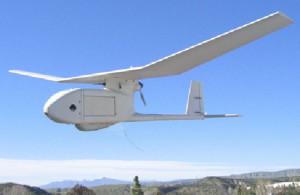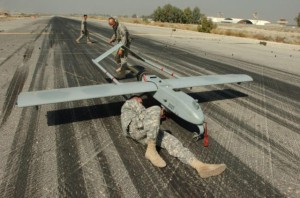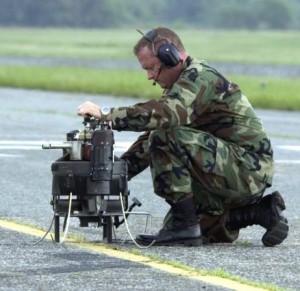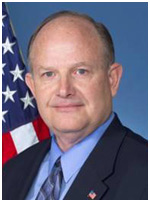Fundamentals of Unmanned Aerial Vehicles, Missions & Systems
 The Fundamentals of Unmanned Aerial Vehicles, Missions & Systems (UAV) short course provides a practical introduction to Unmanned Aerial Vehicles (UAVs) and Unmanned Aerial Systems (UASs), their missions, payloads and data links.
The Fundamentals of Unmanned Aerial Vehicles, Missions & Systems (UAV) short course provides a practical introduction to Unmanned Aerial Vehicles (UAVs) and Unmanned Aerial Systems (UASs), their missions, payloads and data links.
Course participants will explore the traceability of overall mission requirements as dictated by the total target-to-user signal chain. Specific considerations include: target electromagnetic emissions, signal propagation through the atmosphere, signal detection by sensor payloads, transmission along data links and presentation of data to the operational user. A major portion of the course is devoted to Intelligence, Surveillance, and Reconnaissance (ISR) payloads including EO/IR IRLS, LIDAR/LADAR, MSI, HSI, SAR and EW payloads.
 The UAV course provides an in-depth study of the various communications and data links employed by modern UAVs. Instruction covers the technical and operational characteristics of the Common Data Link, SATCOM, C2 and UHF data links and link susceptibility to jamming. The course culminates with thorough training in end-to-end performance analysis.
The UAV course provides an in-depth study of the various communications and data links employed by modern UAVs. Instruction covers the technical and operational characteristics of the Common Data Link, SATCOM, C2 and UHF data links and link susceptibility to jamming. The course culminates with thorough training in end-to-end performance analysis.
Participants will learn how to calculate link throughput performance and data rates associated with each type of payload in typical missions. They will be equipped with the knowledge they need to make key calculations for each step of the process. The course material is enhanced with realistic in-class examples, case studies and real-world problems.
- UAV/UAS History
- Air Vehicle Classes
- New Air Vehicles
- Launch Elements
- Recovery Systems
- Electromagnetic Spectrum
- Atmospheric & Weather Effects
- EO/IR Payloads
- Target Acquisition Requirements
- Target Resolution Requirements
- IR Line Scanner Payloads
- LIDAR/LADAR Payloads
- Multispectral Payloads
- Hyperspectral Payloads
- Electronic Reconnaissance Payloads and Missions
- Digital Communication Theory
- Digital Signal Processing
- Link Requirements
- CDL & Satcom Links
- End-to-End Link Performance Analysis
 The Fundamentals of Unmanned Aerial Vehicles, Missions & Systems (UAV) short course is an intensive 5-day training program that provides a maximum training experience to aerospace professionals with minimum time away from work.
The Fundamentals of Unmanned Aerial Vehicles, Missions & Systems (UAV) short course is an intensive 5-day training program that provides a maximum training experience to aerospace professionals with minimum time away from work.
Fundamentals of Unmanned Air Vehicles, Missions & Systems
- Introduction
- History of UAV’s/UAS’s
- Air Vehicle Types
- Launch & Recovery Elements
- The Electromagnetic Spectrum and the Atmosphere
- EO/IR Payloads
- EO/IR Payloads (continued)
- IRLS Payloads
- LIDAR/LADAR Payloads
- Multi-Spectral & Hyper-Spectral Payloads
- Radar Payloads & Missions
- Electronic Reconnaissance Payloads & Missions
- Introduction to Digital Communication Theory
- Radio Propagation
- Radio Propagation II
- Link Requirements
- Link Requirements II
- The Common Data Link (CDL) & SATCOM Data Link
- Jamming Payloads & Missions
- End-to-End Performance Analysis (Target to Display)
General Requirements
- General physics-based technical background.
- Algebra
Suggested WEA Preparatory Courses
- There are no additional educational requirements for this course.

John L. Minor jlminor@whiteeagleaerospace.com Curriculum Vitae
John L. Minor has over 35 years of technical and operational experience. He is an internationally recognized expert on military sensors, systems, and flight test. He is also a highly decorated instructor and lecturer.
During his career, John has served on the technical staff of the Air Force Flight Test Center, the USAF Test Pilot School, Lockheed Martin and the Lockheed Skunk Works® and others. He began his career with the 9th Strategic Reconnaissance Wing as a sensor system specialist on the SR-71 and U-2 aircraft. Since then, he has worked on a number of high-value military programs, including: the Low Altitude Navigation and Targeting Infrared for Night (LANTIRN), the F/A-18D (RC) Advanced Tactical Air Reconnaissance System (ATARS), and the RQ-3A TIER III Minus (Darkstar) Low Observable (LO) Unmanned Air Vehicle (UAV), as well as numerous other classified programs.
As the USAF Test Pilot School’s former Technical Director (2004-2008) and Systems Master Instructor (1999-2003), John was responsible for developing a state of the art curricula and teaching sensors, weapons, systems, electronic warfare, directed energy, and unmanned systems theory, operations and flight test to the next generation of USAF Test Pilots, Electronic Warfare Officers, and Flight Test Engineers. He has taught many short courses for Society of Flight Test Engineers (SFTE), the Association of Old Crows (AOC), Technology Training Corporation, and has lectured throughout Europe to the Royal Aeronautical Engineering Society (RAeS) and Technical Universities.
John holds BSEE/MSEE degrees from the University of New Mexico/Air Force Institute of Technology. He has been honored with numerous awards and decorations, including: the 2012 Team Hill Spirit Award, the 2010 SFTE Kelly Johnson Award for Outstanding Achievement in the Field of Flight Test Engineering, the 412th Test Wing’s Senior Leader of the Year Award, the SFTE Directors and Fellow Awards, the San Fernando Valley Engineers’ Council Distinguished Engineering Project Achievement Award and the Engineers’ Council Distinguished Engineering Life Achievement Award for his educational contributions to the Edwards AFB engineering community.
Most recently, John served as Chief of the Systems Engineering Division for the Ogden Air Logistics Center Engineering Directorate. He is currently Division Chief over Workforce Management and Development for over 1300 scientists and engineers at Hill Air Force Base.
John and his wife Suzanne reside in the Ogden, Utah area. They are the proud parents of 5, grandparents of 12 and great-grandparents of 7.
We provide on-site short courses for businesses and government organizations. Individuals who wish to attend a course should contact us here.

